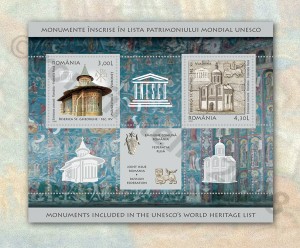 After the proclamation of the Independence of Romania on May 9, 1877 and following its official recognition as one of the important powers of the time – events that propelled the Romanian nation among the modern European nations – on October 15, 1878 were established diplomatic relations with Russia. After the proclamation of the Independence of Romania on May 9, 1877 and following its official recognition as one of the important powers of the time – events that propelled the Romanian nation among the modern European nations – on October 15, 1878 were established diplomatic relations with Russia.
After the proclamation of the Independence of Romania on May 9, 1877 and following its official recognition as one of the important powers of the time – events that propelled the Romanian nation among the modern European nations – on October 15, 1878 were established diplomatic relations with Russia. After the proclamation of the Independence of Romania on May 9, 1877 and following its official recognition as one of the important powers of the time – events that propelled the Romanian nation among the modern European nations – on October 15, 1878 were established diplomatic relations with Russia.
Occasioned by the celebration of 130 years since the enforcement of the diplomatic relations between Romania and the Russian Federation, Romfilatelia will release the joint stamp issue Monuments included in the UNESCO’s world heritage list.
The cooperation relations between Romanian rulers and Russian Tsars, matured by the fight against the Ottoman domination in South-Eastern Europe, have a long lasting tradition. The sword bearer Milescu, Dimitrie Cantemir as well as other political and cultural important figures in Moldavia and Wallachia maintained close cooperation with the Tsars in Russia. We should hereby remind the fact that Russia was the first European power which, during the 18th century, appointed Consuls in Moldavia and Wallachia: a General Consul in Iasi and a Vice-consul in Bucharest in 1780. After the Unification of 1859, the first international convention concluded by Romania was with Russia (the International Telegraph Convention) following the Agreement of December 15, 1860, coming into force in 1862.
The historical changes that the two countries experienced during the 20th century caused, for a period of time, the occasional interruption of the relations between Romanian and Russia.
With the fading of the USSR, the diplomatic and consular representatives of USSR in Romania came to be considered diplomatic and consular representatives of the Russian Federation whereas Romania’s mission in Moscow was designated as the Romanian Embassy in the Russian Federation. The official inauguration of the General Consulate of Romania in Sankt Petersburg occurred in July 2003 and in October 2005, the General Consulate of Romania at Rostov – on – Don was inaugurated.
The postage stamps issue features the images of two monuments hosted by the two countries and
enlisted in the UNESCO’s patrimony.
The stamp with the face value of RON 3.00 presents the image of the Sf. Gheorghe church of the Voronet Monastery.
Built in only 4 and a half months, starting from the spring to the autumn of 1488, the Sf. Gheorghe church of the Voronet Monastery is one of the most valuable establishments built by Stefan cel Mare.
The architecture of the monument is a twinship of aboriginal, Gothic, and Byzantine elements. In 1547, the exterior of the church was painted under the close supervision of the Metropolitan Bishop Grigorie Rosca. Grace to the great fresco adornishing the Western façade (Final Judgment), the Voronet Monastery is considered to be the „Sixtin Chapel of the Orient“ whereas the „Voronet Blue“ knows no counterpart anywhere in the world.
The stamp with the face value of RON 4.30 shows the Sf. Dimitrie church in Vladimir.
Rightfully considered as one of the splendors of the city of Vladimir, the Sf. Dimitrie church was built by Prince Vsevolod III.
As an icon in the rock, the church is surrounded in a veil of mysteries, one of them being the date when the construction of the building was initiated, date that has failed to be recorded by all
historical chronicles. We can however find written evidence on the year the Sf. Dimitrie icon from Thessaloniki was brought, in 1197.
The exotic ornaments, the bas reliefs representing lions, centaurs, and white leopards cover the white walls of the church. The sculpted interior decorations cover biblical themes and equally Greek mythology. The central part of the church façade envisages the repeated image of King David associated, during the Middle Ages, with the celebration of beauty and harmony of the world.
An unique piece in the collection of historical and cultural monuments in the Russian city of Vladimir, the church is now waiting to welcome visitors, putting forth and highlighting its exquisiteness and the thesaurus of works of art it hosts.
We hereby wish to express our gratitude to UNESCO – Romania for all their support provided for the releasing of the postage stamps issue.
Issue date: 2008-06-23
















